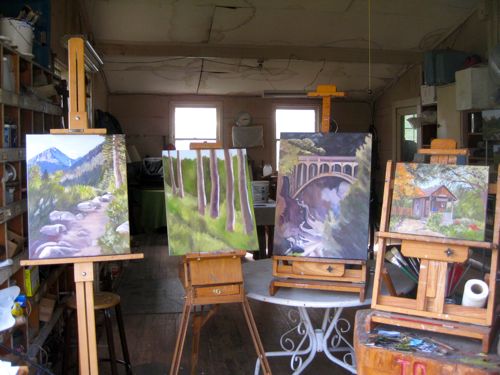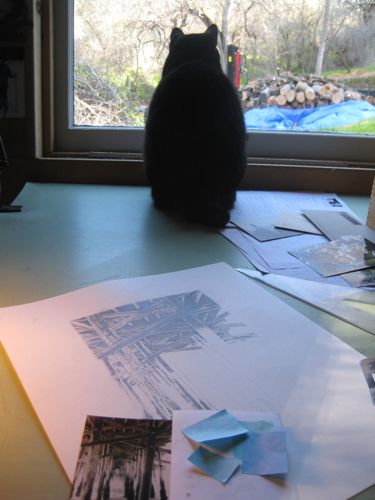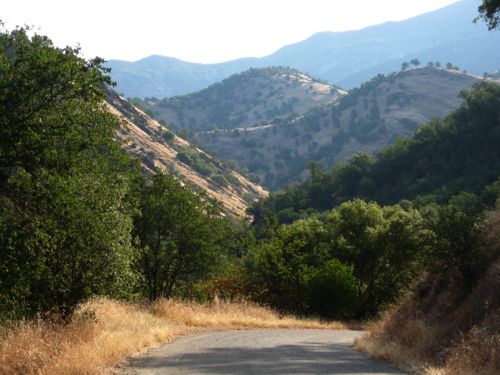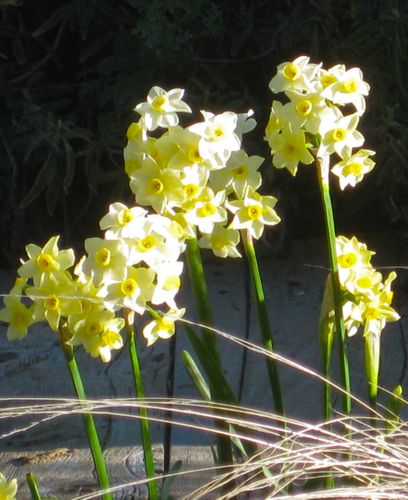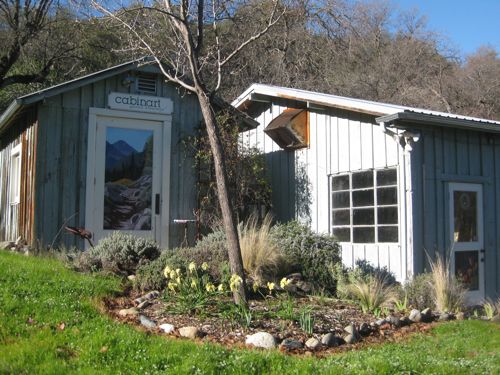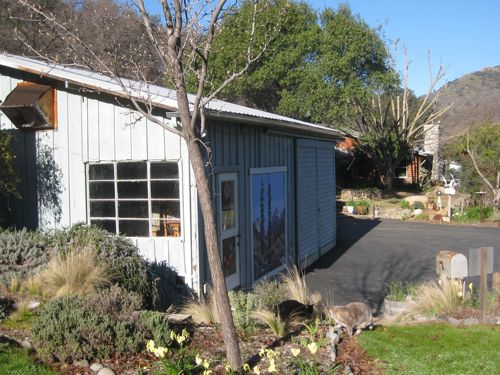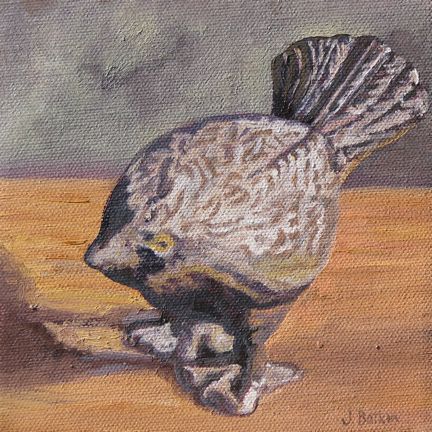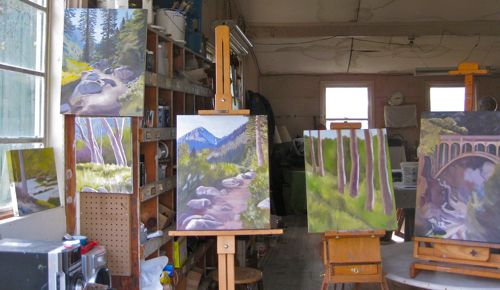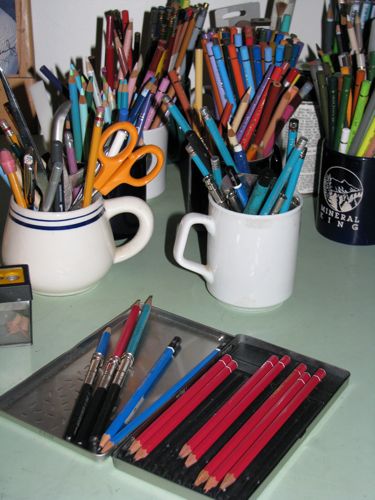Have a look at this painting:
Say what? Wasn’t this painting of the bridge much further along? Indeed it was.
It was sitting on a tabletop easel on that round white table, just as you see it in this photo. I put another painting on the folding easel (the one with aspen trees) and set it in front of the round table to begin painting. As I reached back to tighten the bolts to prevent it from falling backward, WHAM! it fell backward. The top of the easel ripped a long tear into the bridge painting on the easel behind it. Lots of thoughts went through my mind, sort of like they do when you see a Mustang headed directly for your driver’s side door at 60 mph and know you are toast. Here are some of the thoughts:
- Canvas can’t be repaired.
- That was the expensive thick 18×24 canvas.
- I love painting that bridge.
- This isn’t really happening.
- I should have seen that coming.
- Maybe I got that expensive canvas on sale.
- Good thing I like painting that bridge.
- Good thing it was only 1/2 finished and not 75% finished.
Perhaps all those thoughts weren’t there as the easel was collapsing, but they were there shortly afterward. The odd thing is that I didn’t swear or even feel upset. I just took the wire off the back, got another (thinner, less-expensive) 18×24 canvas unwrapped and applied the wire to the back. Then I started painting again.
After it began to soak in that I had just knocked my finish time for all these paintings back by a large amount of time, I retreated to the studio and took refuge in my pencils.

